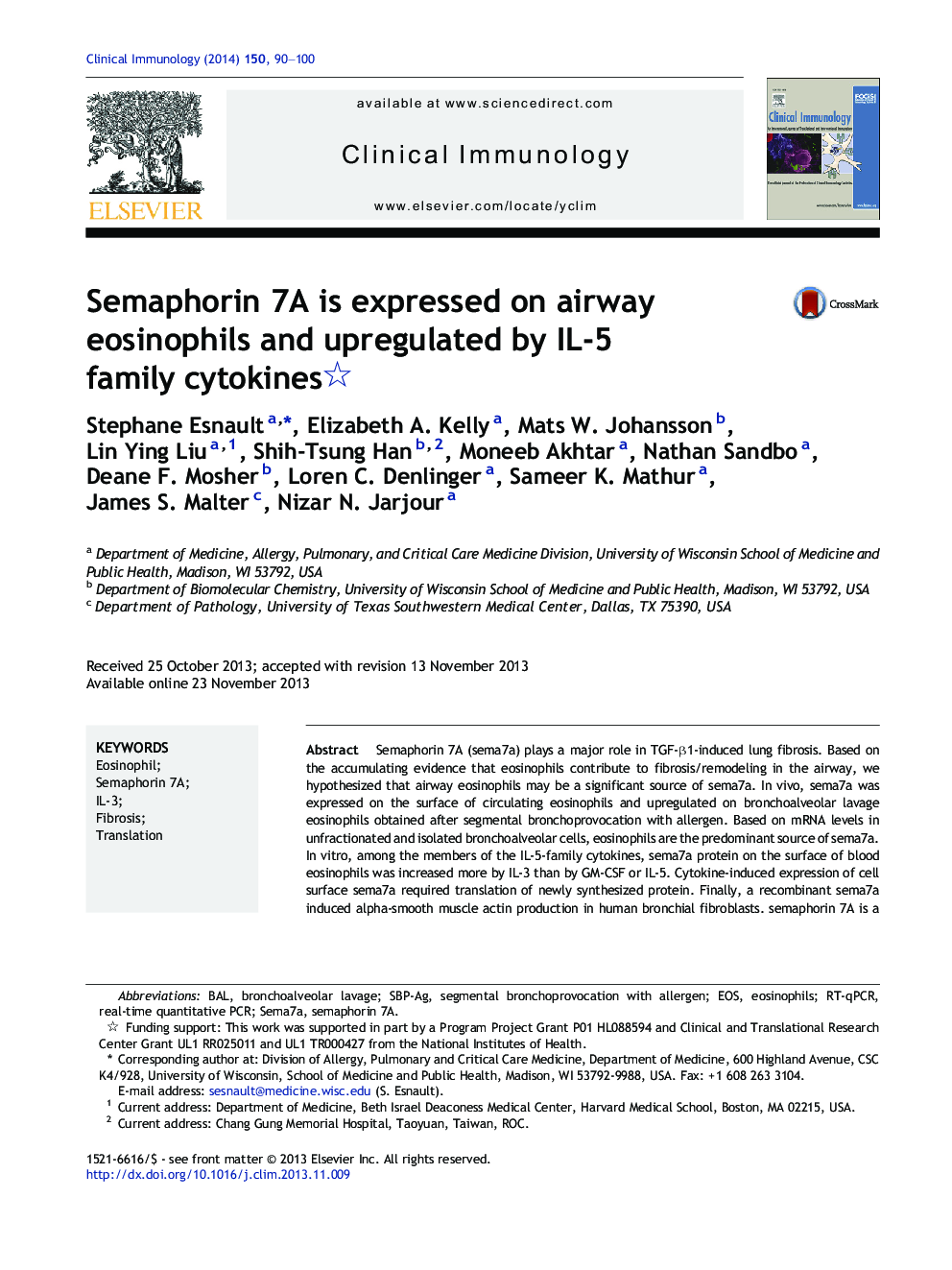| Article ID | Journal | Published Year | Pages | File Type |
|---|---|---|---|---|
| 3256919 | Clinical Immunology | 2014 | 11 Pages |
•Semaphorin 7A is known to be critical for the induction of lung remodeling.•We show that human airway eosinophils are a major carrier of semaphorin 7A.•IL-3 is a strong inducer of de novo semaphorin 7A protein on blood eosinophils.•Semaphorin 7A directly induces alpha-SMA in human bronchial fibroblasts.•We propose that eosinophils can increase tissue remodeling via semaphorin 7A.
Semaphorin 7A (sema7a) plays a major role in TGF-β1-induced lung fibrosis. Based on the accumulating evidence that eosinophils contribute to fibrosis/remodeling in the airway, we hypothesized that airway eosinophils may be a significant source of sema7a. In vivo, sema7a was expressed on the surface of circulating eosinophils and upregulated on bronchoalveolar lavage eosinophils obtained after segmental bronchoprovocation with allergen. Based on mRNA levels in unfractionated and isolated bronchoalveolar cells, eosinophils are the predominant source of sema7a. In vitro, among the members of the IL-5-family cytokines, sema7a protein on the surface of blood eosinophils was increased more by IL-3 than by GM-CSF or IL-5. Cytokine-induced expression of cell surface sema7a required translation of newly synthesized protein. Finally, a recombinant sema7a induced alpha-smooth muscle actin production in human bronchial fibroblasts. semaphorin 7A is a potentially important modulator of eosinophil profibrotic functions in the airway remodeling of patients with chronic asthma.
